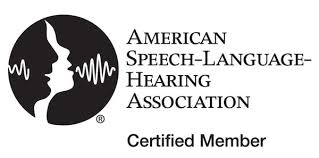
To use in your report, highlight text first then:
COPY
WINDOWS: Ctrl + C
MAC: Command + C
PASTE with no Formatting
WINDOWS: Ctrl + Shift + V
MAC: Shift + Option + Command + V
PASTE with Formatting
WINDOWS: Ctrl + V
MAC: Command + V
**Use for templates with tables**
Comprehensive Assessment of Spoken Language (CASL)
The Comprehensive Assessment of Spoken Language (CASL) is a norm-referenced oral language assessment battery of tests for children and adults aged 3-21. Each of the CASL tests is individually administered and yields a standard score compared to other individuals of the same chronological age. For this standard score 100 is mean and 85-115 is considered the range of average for ’s chronological age.
Lexical/Semantic Category of Tests
CASL-basic concepts: This test measures the ability of young children to comprehend words that refer to basic perceptual and conceptual relationships such as size, shape, quantity, quality, distance, direction, and position. 's standard score of is considered . Analysis of responses indicated strengths/difficulty .
CASL-antonyms: the antonyms test is designed to measure the ability to identify words that are opposite in meaning and to be able to retrieve, generate and produce a single word when its opposite is given as a stimulus. 's standard score of is considered . Analysis of responses indicated strengths/difficulty .
CASL-synonyms: This test is designed in a multiple choice format to allow the student to recognize from a list of words the word that would have the same meaning or that is sufficiently alike in meaning to be substituted for the stimulus word. 's standard score of is considered . Analysis of responses indicated strengths/difficulty .
CASL-sentence completion: This test is a measure of word retrieval, knowledge, and expression within a linguistic context. The student is required to comprehend the vocabulary and syntactic structure of the stimulus sentences as well as have sufficient world knowledge to use its content and grammatical structure to generate an acceptable completion using a single word. 's standard score of is considered . Analysis of responses indicated strengths/difficulty .
CASL-idiomatic language: For this test, students are asked to complete a given idiom. Idioms are defined as a group of words that when used together in a particular linguistic or environmental context, have a conventional meaning different from the literal rendering of the individual words. This test measures a student’s knowledge, retrieval and oral expression of American English idioms. 's standard score of is considered . Analysis of responses indicated strengths/difficulty .
Syntactic Category of Tests
CASL-syntax construction: this test is designed to assess the ability to generate sentences with an emphasis on the use of the rules that govern sentence formulation and expression. These include basic sentence types and verb tense rules. 's standard score of is considered . Analysis of responses indicated strengths/difficulty .
CASL-paragraph comprehension: this test measures the comprehension of sentence structure (syntax). It consists of short stories containing simple to complex sentences and the student is then asked to point to pictures that answer simple questions about each story. 's standard score of is considered . Analysis of responses indicated strengths/difficulty .
CASL-grammatical morphemes: this test measures the metalinguistic knowledge of the form and meaning of the grammatical morphemes in the English language. Morphemes are words or word endings that add meaning to sentences such as plurals, possessives, pronouns, derivational suffixes, etc… 's standard score of is considered . Analysis of responses indicated strengths/difficulty
CASL-sentence comprehension: This test measures the ability to comprehend the meaning of the structure organization of sentences. It assesses the ability to comprehend sentence types such as simple, complex, and embedded declarative sentences with one or more phrase/clause and grammatical structures including active/passive voice, direct/indirect objects, possessive forms, prepositions and negatives. It also assesses the ability to comprehend word order when such order distinguishes meaning. 's standard score of is considered . Analysis of responses indicated strengths/difficulty .
CASL-grammaticality judgment: this test assesses the student’s ability to make immediate judgments of the grammaticality of presented sentences and to correct those sentences that present with errors. The test looks at the student’s ability to recognize and correct errors in the use of the syntactic areas of noun-verb agreement, noun number, verb tense, pronouns, negatives, prepositions, irregular forms, direct/indirect objects, active/passive voice coordination, and embedding. 's standard score of is considered . Analysis of responses indicated strengths/difficulty .
Supralinguistic Category of Tests
CASL-nonliteral language: this test is designed to assess the ability to comprehend nonliteral language in the form of figurative speech, indirect requests, and sarcasm. The student must be able to recognize that spoken language cannot always be interpreted in a literal manner and then give an explanation of how the spoken language was intended to be interpreted. 's standard score of is considered . Analysis of responses indicated strengths/difficulty .
CASL-meaning from context: this test measures derivation of the meaning of words from their oral linguistic context. It measures the inference ability that does not require the student to use world knowledge to arrive at the full meaning of the spoken text but rather for him/her to rely on information found within the linguistic context of the immediate stimulus to determine meaning of an unknown word. 's standard score of is considered . Analysis of responses indicated strengths/difficulty .
CASL-inference: this test measures the student’s ability to use previously acquired world knowledge to derive meaning from inferences. Students must integrate appropriate world knowledge with information provided in messages spoken by the examiner in order to comprehend what the sentences mean. 's standard score of is considered . Analysis of responses indicated strengths/difficulty .
CASL-ambiguous sentences: this test assesses the ability to comprehend sentences containing elements that produce ambiguity. The elements in the test that cause the ambiguity are words that can have more than one meaning and sentences that can be interpreted in more than one way. 's standard score of is considered . Analysis of responses indicated strengths/difficulty .
Pragmatic Category of Tests
CASL-pragmatic judgment: this test is designed to measure the knowledge and use of pragmatic rules of language by having the student judge the appropriateness of language used in a specific situation or to actually respond with appropriate language for a given situation. 's standard score of is considered . Analysis of responses indicated strengths/difficulty .





